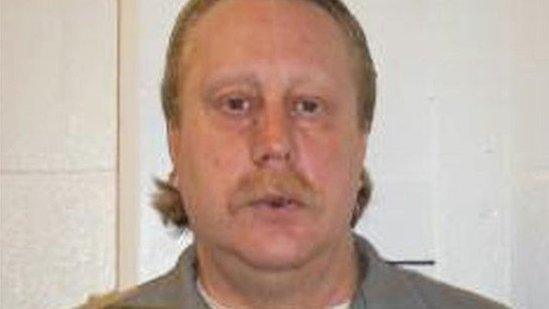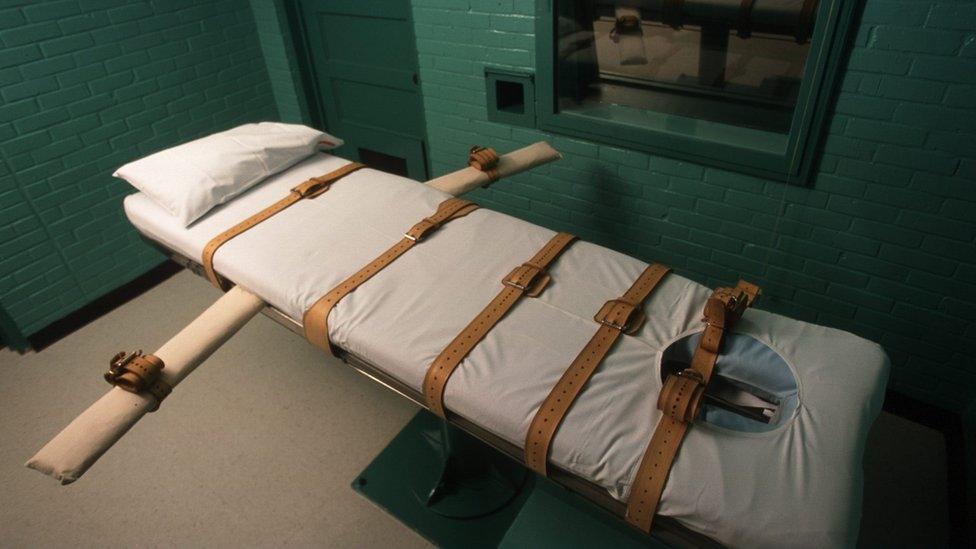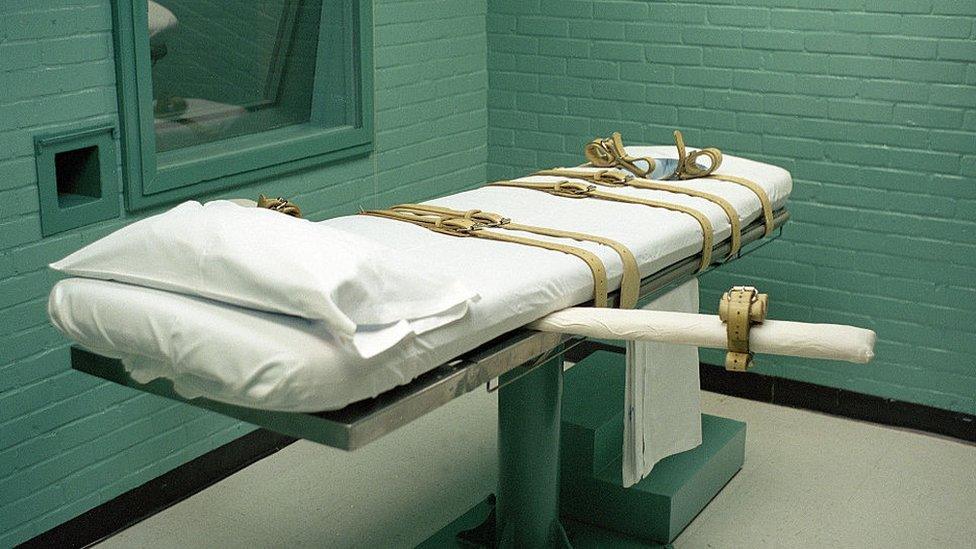Daniel Lewis Lee: US judge delays first federal execution in 17 years
- Published

Lee killed a family of three before dumping their bodies in a lake
A US judge has ordered the first federal execution in more than 17 years to be delayed, just hours before it was due to go ahead
The judge issued an injunction on Monday, shortly before the lethal injection was scheduled in the state of Indiana.
Judge Tanya Chutkan said there were still unresolved legal challenges against the US Justice Department.
Daniel Lewis Lee was convicted of killing a family in Arkansas in 1996.
Lee, who tortured and killed the family of three before dumping their bodies in a lake, had originally been scheduled for execution in December. His case was delayed after courts blocked the death sentence from being carried out.
"The public is not served by short-circuiting legitimate judicial process," Judge Chutkan, of the district court in Washington DC, said on Monday.
Four other federal executions were delayed because of the ruling, which allows further legal challenges against the government's lethal injection protocols to take place.
The justice department immediately appealed against the decision.
What's the background?
The execution of Lee - and the four others that were delayed - were all set to use an injection containing the drug pentobarbital.
The inmates have argued that the drug violates their constitutional right not to have "cruel and unusual punishments inflicted", because it has allegedly caused additional medical problems in previous uses.
"The court... finds that the likely harm that plaintiffs would suffer if the court does not grant injunctive relief far outweighs any potential harm to defendants," Judge Chutkan said.
A lawyer for one of the four federal death-row inmates said in a statement on Monday: "The government has been trying to plough forward with these executions despite many unanswered questions about the legality of its new execution protocol."
The delay comes shortly after an appeals court ruled that the execution of Lee should go ahead.
Some of the victims' relatives oppose Lee's execution and had sought to have it delayed, arguing attending it could expose them to coronavirus.
But on Sunday, the 7th Circuit Court of Appeals said the relatives' case lacked "any arguable legal basis".
Earlene Peterson, 81, whose daughter, granddaughter and son-in-law were killed by Lee, has said she wants the 47-year-old to be given life in jail, the same sentence as his accomplice.
Why the change in rules on executions?
The Trump administration said it would resume federal executions after a long hiatus last year.
In a statement at the time, Attorney General William Barr said: "Under administrations of both parties, the Department of Justice has sought the death penalty against the worst criminals.
"The Justice Department upholds the rule of law - and we owe it to the victims and their families to carry forward the sentence imposed by our justice system."
The women who write to death row inmates
The move has been criticised as a political decision, with campaigners also expressing concern about cases being rushed.
The last inmate executed by the federal death penalty was Louis Jones Jr, a 53-year-old Gulf War veteran who murdered 19-year-old soldier Tracie Joy McBride.
Federal and state executions - what's the difference?
Under the US justice system, crimes can be tried either in federal courts - at a national level - or state courts, at a regional level.
Certain crimes, such as counterfeiting currency or mail theft, are automatically tried at a federal level, as are cases in which the United States is a party or those which involve constitutional violations. Others can be tried in federal courts based on the severity of the crimes.
The death penalty was outlawed at state and federal level by a 1972 Supreme Court decision that cancelled all existing death penalty statutes.
A 1976 Supreme Court decision allowed states to reinstate the death penalty and in 1988 the government passed legislation that made it available again at a federal level.
According to data collected by the Death Penalty Information Center, 78 people were sentenced to death in federal cases between 1988 and 2018 but only three have since been executed. There are 62 inmates currently on federal death row.
- Published1 April 2019

- Published26 July 2019

- Published21 November 2019
